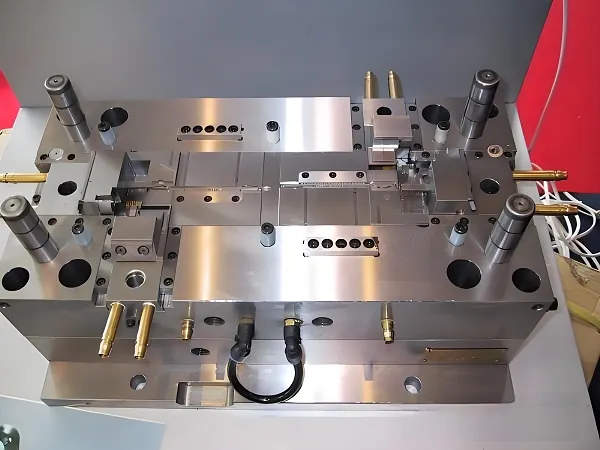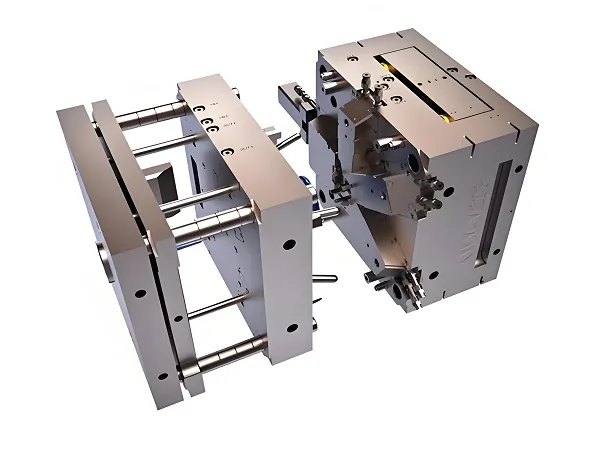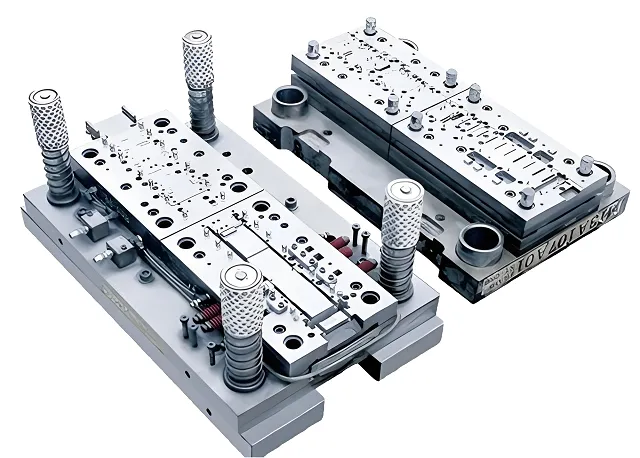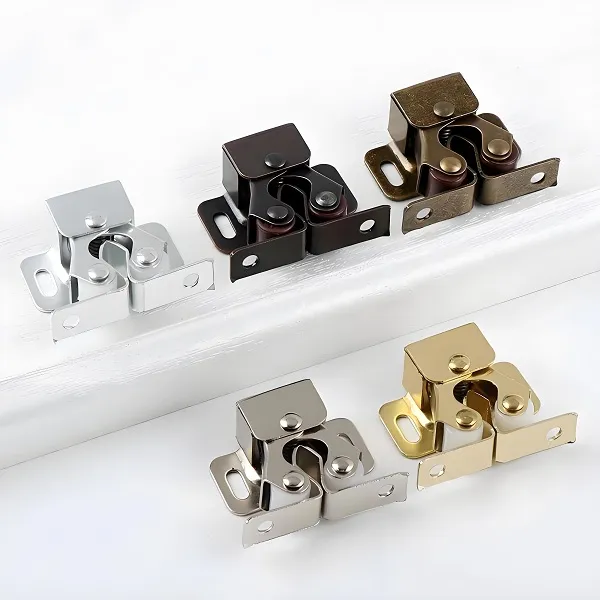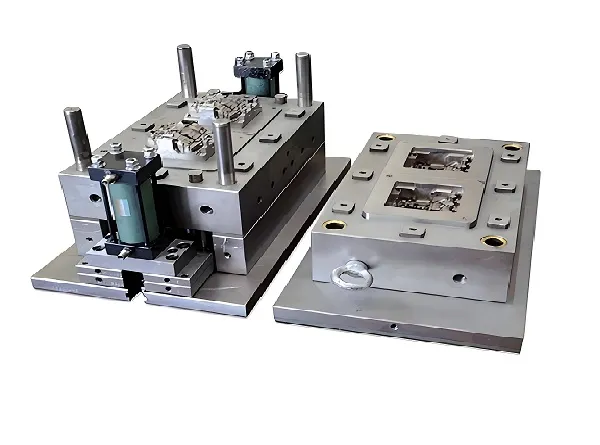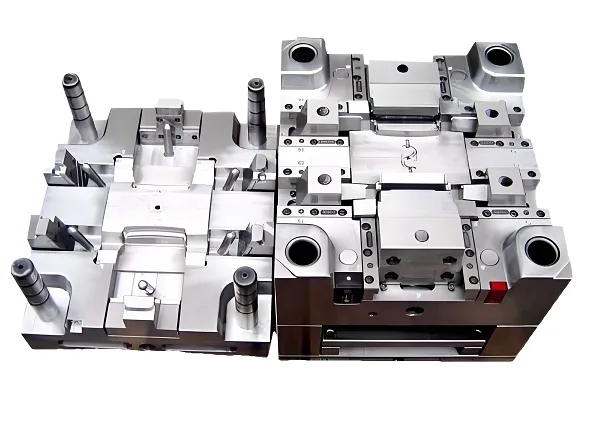With the continuous growth of global demand for clean energy, the wind power industry, as a crucial field of renewable energy, is undergoing vigorous development. The performance and reliability of wind power equipment directly affect power generation efficiency and the stability of energy supply, which largely depend on the machining quality of equipment components. Large-scale wind power equipment components, such as blades, towers, hubs, and generator stators/rotors, are characterized by large sizes, complex structures, and high-precision requirements. Traditional machining methods struggle to meet the needs of high-quality and high-efficiency machining. CNC (Computer Numerical Control) machining technology, with its advantages of automation, high precision, and flexibility, has become the core technology for manufacturing wind power equipment components, playing a key role in improving production efficiency, ensuring product quality, and reducing production costs. In-depth research on CNC machining technology for wind power equipment components is of great significance for promoting technological progress and sustainable development in the wind power industry.
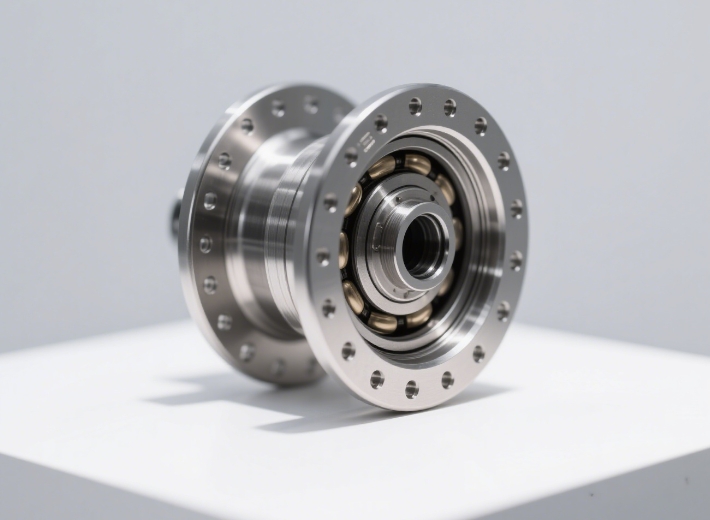
Characteristics and Challenges of CNC Machining for Wind Power Equipment Components
Large-scale and High-precision Requirements
To capture more wind energy, the size of wind power components continues to increase, such as blades exceeding 100 meters in length and towers with diameters of several meters. While large-scale design improves power generation efficiency, it imposes extremely high requirements on the load-bearing capacity and machining precision of equipment. For example, the trapezoidal slots in the laminated core of a generator stator/rotor require a depth tolerance of ≤±0.003mm for embedding insulating materials. If the wall roughness of the slots exceeds Ra1.6μm, it is prone to local discharge, affecting generator performance.
Complex Structures and Surface Machining
Wind turbine blades feature complex surface shapes to achieve optimal aerodynamic performance, while hubs, connecting multiple components, have complex structures with numerous mounting holes and irregular surfaces. Machining such complex structures and surfaces requires CNC systems with multi-axis Linkage capabilities and advanced tool path planning algorithms to ensure machining precision and surface quality.
Material Properties and Machining Difficulty
Wind power equipment often uses high-strength alloy steel, composite materials, and other materials. High-strength alloy steel has high hardness and toughness, resulting in large cutting forces and easy tool wear; composite materials are anisotropic, prone to defects such as delamination and tearing during machining, posing challenges for machining processes and tool selection. For instance, wind power shafts made of high-strength alloy steel require high-power spindle motors and high-performance tool systems to cope with their high hardness and strength.
Application of CNC Systems in Machining Wind Power Equipment Components
Multi-axis Simultaneous Control Technology
Multi-axis Linkage CNC systems are widely used in machining wind power equipment components. For example, five-axis Linkage CNC machining centers enable efficient and high-precision machining of complex surfaces. When machining wind blade molds, five-axis Linkage allows the tool to move in multiple directions, closely fit closely the mold surface, ensuring profile accuracy and improving blade aerodynamic performance. The Zhikai Type C full-servo wire EDM machine uses a five-axis Linkage servo system combined with a 3D compensation algorithm to achieve a trapezoidal structure angle accuracy of ±0.05° for stator lamination slots, with roughness stable at ≤Ra0.7-1.4μm.
High-precision Motion Control Technology
CNC systems achieve micron-level positioning accuracy through high-precision ball screw pairs, linear guides, and servo drive systems. When machining key components such as large rolls and wind hubs, they can precisely control tool feed and cutting depth to ensure dimensional accuracy and surface quality. CNC vertical lathes ensure the cylindricity error of rolls is within a extremely small range through high-precision motion control, meeting the high-precision requirements of key components in wind power equipment.
Intelligent Machining Control Technology
Modern CNC systems integrate sensors and intelligent control systems to monitor parameters such as cutting force, temperature, and vibration in real time. During machining, the system automatically adjusts cutting parameters based on monitoring data. For example, in marine crankshaft machining, the intelligent control system optimizes cutting speed and feed rate according to the material hardness and machining allowance of different crankshaft parts to ensure machining quality and improve production efficiency. In case of anomalies, the system promptly alarms and stops to avoid equipment damage and workpiece scrapping.
Analysis of High-precision Machining Processes
Precision Measurement and Error Compensation Technology
In machining wind power equipment components, precision measurement technology monitors the machining process in real time to ensure accuracy. High-precision measuring equipment such as laser rangefinders and coordinate measuring machines (CMMs) real-time monitor and adjust machining errors. During the precision machining stage, CNC vertical lathes use such measurement technologies to ensure bearing machining accuracy meets design requirements. Meanwhile, error compensation models are established to compensate for geometric errors, thermal errors, etc., further improving machining precision.
Advanced Tool and Cutting Parameter Optimization
Selecting appropriate tools and cutting parameters is key to achieving high-precision machining. Dedicated tools are developed for the material characteristics of wind power equipment components, such as cemented carbide coated tools for machining high-strength alloy steel, improving tool durability and cutting performance. Through cutting tests and simulation analyses, cutting parameters are optimized to improve machining efficiency and reduce surface roughness while ensuring machining precision.
Machining Process Route Optimization
A reasonable process route reduces machining error accumulation and improves machining precision. For complex wind power components, a step-by-step process route of roughing, semi-finishing, and finishing is adopted to gradually remove allowances and control machining deformation. For example, in wind blade machining, roughing first removes most of the allowance, followed by semi-finishing and finishing to ensure profile accuracy and surface quality. Reasonably arranging the machining sequence reduces clamping times and improves positioning accuracy.
Analysis of High-efficiency Machining Processes
High-speed Cutting Technology
High-speed cutting can significantly improve machining efficiency and reduce machining time and costs. High-speed CNC machining centers applied in the wind power industry have rapid traverse speeds of up to 30m/min. When machining wind blade molds, high-speed cutting quickly removes excess material, reducing the workload of subsequent grinding processes. When machining tower plate grooves, it efficiently ensures groove angle and dimensional accuracy, improving welding quality. High-speed cutting requires machines with high rigidity, high-speed spindles, and fast feed systems, while reasonably selecting tools and cutting parameters.
Automated Machining Technology
Automated machining technology reduces manual intervention and improves production efficiency and machining precision consistency. In machining wind power equipment components, automated loading/unloading devices, automatic tool changers, robot-assisted machining, and other technologies are adopted. Automated production lines can achieve automatic cutting, welding, and rolling of tower wall plates, improving machining efficiency and quality. Robots can complete auxiliary machining processes for wind blades, such as grinding and gluing, enhancing production efficiency.
Multi-process Integrated Machining Technology
Multi-process integrated machining technology completes multiple machining processes on a single device, reducing workpiece clamping times and handling time, and improving machining efficiency and precision. CNC turning-milling composite machining centers can complete multiple processes such as turning, milling, drilling, and boring for wind power shafts and other components in a single clamping, avoiding positioning errors caused by multiple clampings and improving machining precision and production efficiency.
Analysis of Complex Surface Machining Processes
Tool Path Planning Based on CAD/CAM Technology
CAD/CAM technology is widely used in machining complex surface components of wind power equipment. The 3D model of the component is built using CAD software, and CAM software generates tool paths based on the model and machining requirements. For the complex surfaces of wind blades, tool path planning methods such as equal-parameter line method and projection method are adopted to ensure the tool moves reasonably along the surface, guaranteeing machining precision and surface quality. Meanwhile, the simulation function of CAM software is used to simulate the machining process and identify and solve potential problems in advance.
Application of Five-axis Simultaneous Machining Technology in Complex Surface Machining
Five-axis Linkage machining technology is the core technology for complex surface machining, enabling arbitrary attitude adjustment of the tool in space, making the tool fit the surface profile more closely, avoiding interference, and improving machining precision and efficiency. When machining complex surface components such as wind blades and hubs, five-axis Linkage machining centers can precisely machine complex shapes to meet design requirements and enhance wind power equipment performance. For example, the Zhikai Type C full-servo wire EDM machine uses five-axis Linkage to achieve high-precision control of complex geometric shapes.
Application of Adaptive Machining Technology in Complex Surface Machining
Adaptive machining technology adjusts machining parameters in real time according to changes in workpiece material properties and machining allowances during machining to ensure machining quality and efficiency. In machining complex surfaces such as wind blades, due to the uneven distribution of material properties and machining allowances, adaptive machining technology uses sensors to monitor the machining status in real time, and the CNC system automatically adjusts cutting parameters to ensure stable machining and improve machining precision and surface quality.
Analysis of Multi-axis Simultaneous Machining Technology
Principles and Advantages of Multi-axis Simultaneous Machining
Multi-axis Linkage machining realizes complex relative movements between the tool and workpiece through the collaborative motion of multiple axes, enabling the machining of complex shapes that are difficult to achieve by traditional machining methods. Compared with three-axis machining, multi-axis Linkage machining reduces clamping times, improves machining precision and efficiency, and lowers production costs. In machining wind power equipment components, multi-axis Linkage machining technology can meet the high-precision machining requirements of components such as blades, hubs, and complex parts in the nacelle.
Application Cases of Multi-axis Simultaneous Machining in Wind Power Equipment Components
A certain enterprise uses a seven-axis five Linkage turning-milling composite CNC machine to machine wind power hubs, achieving high-precision machining of complex surfaces and mounting holes through multi-axis Linkage,ensuring the connection precision of each component and improving the operational stability of wind turbines. When machining large propellers, the seven-axis five Linkage turning-milling composite CNC machine is used, fully considering the dynamic constraints of the machine to achieve efficient and high-precision machining.
Challenges and Solutions of Multi-axis Simultaneous Machining Technology
Multi-axis Linkage machining technology faces challenges such as complex machine dynamics, difficult tool attitude control, and complex programming and debugging. By establishing a machine dynamics model, analyzing machine motion characteristics, and optimizing tool paths and cutting parameters, machine vibration and impact are reduced. Advanced programming software is developed to simplify the programming process and improve programming efficiency and accuracy. Operator training is strengthened to improve operation skills and problem-solving abilities.
Analysis of Practical Application Cases
Case 1: CNC Machining of Wind Blade Molds
A wind power equipment manufacturing enterprise uses a high-speed CNC machining center to machine wind blade molds. The molds are large in size, complex in shape, and have high requirements for machining precision and surface quality. The high-speed CNC machining center is equipped with a large worktable and professional tools, using high-speed cutting technology to quickly remove excess material, while the CNC system precisely controls to ensure mold profile accuracy and reduce the workload of subsequent grinding processes. Using five-axis Linkage technology, the tool can move along complex surfaces to ensure mold surface accuracy and improve blade aerodynamic performance. Through optimized machining processes, production efficiency is increased by 50% compared with traditional machining methods, and the product qualification rate reaches 98%.
Case 2: Machining of Generator Stator/Rotor Metal Parts
A wind power generation enterprise uses the Zhikai Type C full-servo wire EDM machine in machining generator stator/rotor metal parts. The machining precision requirements for stator core lamination slots and rotor magnet installation slots are extremely high, which are difficult to meet by traditional equipment. The Zhikai Type C full-servo wire EDM machine uses a five-axis Linkage servo system and 3D compensation algorithm to achieve high-precision control of complex geometric shapes; it is equipped with an adaptive pulse power supply that automatically matches parameters for different materials to ensure cutting stability. After introducing this machine, machining efficiency has been significantly improved, with single-slot machining time reduced from 25 minutes to 8 minutes, the yield rate increased from 78% to 97%, and annual production capacity increased by 35%.
Case 3: CNC Machining of Wind Towers
A tower manufacturing enterprise uses CNC machining technology to achieve efficient and high-quality machining of wind towers. The CNC system controls the automatic cutting, welding, and rolling of tower wall plates to improve machining efficiency and quality. When machining key components such as tower flanges, CNC machining centers achieve high-precision hole machining and plane machining to ensure the connection precision between flanges and towers. By optimizing CNC machining processes, the uniformity of tower wall thickness is controlled to ensure the safety and stability of tower stress. CNC spraying equipment is used to achieve uniform coating spraying on the tower outer surface, improving the tower’s anti-corrosion performance and service life. Compared with traditional machining methods, production efficiency is increased by 30%, and the rejection rate is reduced to below 5%.
Conclusions and Prospects
CNC machining technology plays an irreplaceable role in manufacturing wind power equipment components. Through the application of technologies such as high-precision machining, high-efficiency machining, complex surface machining, and multi-axis Linkage machining, it effectively solves the challenges in machining wind power equipment components and improves product quality and production efficiency. With the continuous development of the wind power industry, wind power equipment will move towards larger capacity and higher efficiency, putting forward higher requirements for CNC machining technology of equipment components. In the future, it is necessary to further research and develop advanced CNC systems and machining processes, such as intelligent CNC systems, AI-based machining parameter optimization, high-performance tool materials and coating technologies, etc.; strengthen interdisciplinary integration to improve the digitalization and intelligence level of the machining process; and carry out research on green manufacturing technologies to reduce energy consumption and environmental pollution in the machining process. Through continuous technological innovation, promote the continuous progress of CNC machining technology for wind power equipment components and provide strong support for the sustainable development of the wind power industry.

